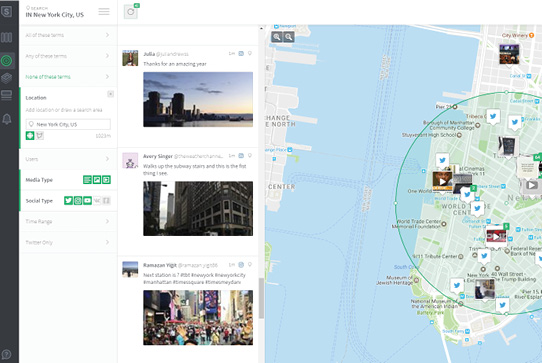A new tool from the Associated Press will now allow users of its service to pull in topical and verified content shared by users on social media such as photos and videos around breaking news. Using the web interface provided by social media platform manager SAM (AP owns a stake in SAM and has been using it since 2015), AP Social Newswire lets AP clients look through social content that is being curated and vetted by AP editors in real-time.
From the AP:
View multiple feeds of content — from global to local — and monitor the vetting process in real-time through the notes and tags and that we apply to each asset (such as “authenticated” or “debunked”). All photos and videos are delivered in a digital-friendly format giving you the ability to seamlessly integrate UGC into your stories through embed codes.
In the realm of offering other news organizations user-generated content, AP is later to the game; services like Storyful, a dominant clearinghouse of sorts for viral social video, already operate successfully in a similar space. With Social Newswire, however, the AP is showing its work, when it comes to how exactly its staffers are finding and handling user-generated material. Eric Carvin, AP Social Media Editor, said:
I think we’re offering something unique. At AP, finding, authenticating and getting permission for high-impact eyewitness media has been core to our newsgathering for years. We have expertise that’s deep and wide — we maintain high standards around this work, and we have people all over the world, close to where news is happening, who can bring their skills to bear. Through this new service, we’re offering a window into that process as it unfolds, sharing information in real time about what we’re chasing and where we are in the verification and rights-clearance process. And SAM’s technology allows users to bring that content into a publishing workflow that’s simple and optimized for digital output.

The tool will be available to organizations at an additional cost.
2 comments:
Hello there, just became alert to your blog through Google, and found that it’s truly informative.
I am going to watch out for brussels. I’ll be grateful if you continue
this in future. Lots of people will be benefited from your writing.
Cheers! Najlepsze escape roomy
Very interesting information!Perfect just what I was searching
for!?
Trackbacks:
Leave a comment